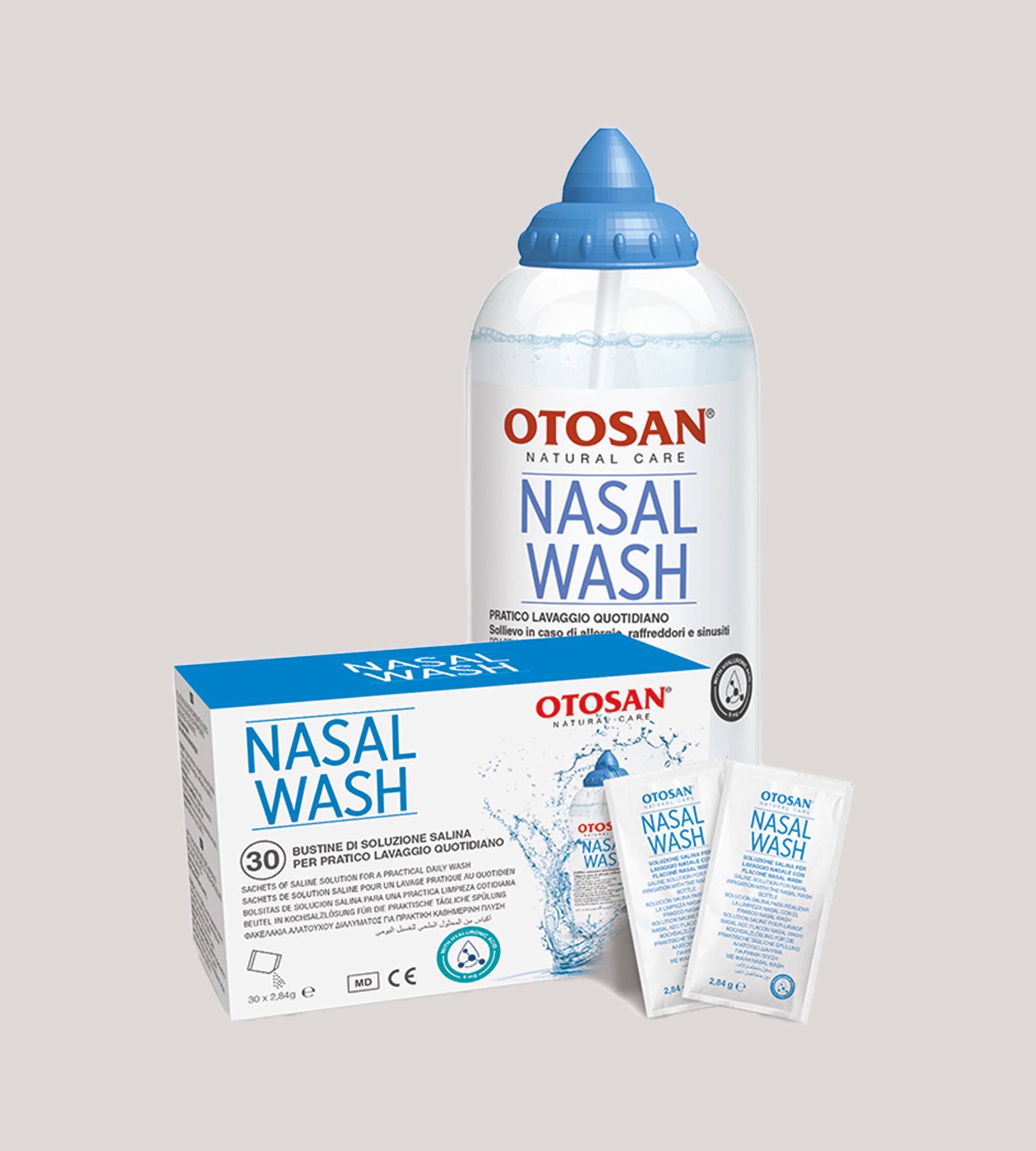Stuffy nose in maternity, the signs of pregnancy rhinitis

Reading time: about 3 minutes
Did you know that around 60 per cent of pregnant women experience a stuffy nose without necessarily having a cold or allergies? This phenomenon is known as pregnancy rhinitis and generally occurs in the second stage of gestation, during the last 6 weeks or more, and is caused by hormonal changes in the pregnant woman's body.
First of all, it is important to reassure: pregnancy rhinitis does not pose a risk to the pregnancy or the coming baby, however it can be annoying, especially if the symptoms are intense and long-lasting. In this article we will explore the symptoms and causes behind pregnancy rhinitis, share remedies and practical tips for treating it and improving comfort during this sensitive period.
What are the most common symptoms of pregnancy rhinitis?
Among the most common symptoms experienced by patients suffering from pregnancy rhinitis are:
- Persistent stuffy nose: nasal breathing obstruction is caused by the enlargement of tissues inside the nose called turbinates.
- Difficulty perceiving smells.
- Nasal stuffiness and continuous sneezing.
- Runny nose.
- Feeling of heaviness in the nose and itching.
Fortunately, the symptoms are often transitory and tend to improve rapidly immediately after birth, only in rare cases the condition is persistent over time.
Possible causes of pregnancy rhinitis.
Doctors agree that it is possible to speak of pregnancy rhinitis in the presence of nasal congestion occurring in the absence of other indications of respiratory tract infection (whether viral or bacterial) or causes of allergic origin.
Hormones, oestrogen and progesterone, are responsible for gestational rhinitis: these hormones are said to have an effect on the increased vascularisation and glandular secretions that cause the nasal mucosa to swell and become congested. Gestational rhinitis thus seems to be a consequence of the natural hormonal changes that occur during pregnancy.
During pregnancy, the body also produces more blood, which can cause an increase in the size of the mucous membranes in the nose. This can lead to nasal congestion, resulting in the production of watery secretions.
Finally, it would be useful to keep an eye on some factors that can make pregnancy rhinitis even more annoying, such as cigarette smoke, exposure to pollen and mites. These are known to be irritants and could aggravate the symptoms of the condition.
Useful tips for relieving the discomfort of pregnancy rhinitis, without the use of medication.
Unfortunately, there is no definitive cure for pregnancy rhinitis, as it is caused by hormones. Furthermore, the use of antihistamines or medication is not recommended during pregnancy. Here are some good tips to alleviate the discomfort associated with pregnancy rhinitis:
- Nasal washes: performing nasal washes with plenty of saline solution seems to be one of the most effective treatments. They can be carried out morning and evening to keep the nasal mucosa as clean and decongested as possible. Saline solution, even better if enriched with Hyaluronic Acid, clears the airways and relieves nasal congestion. It favours the release of mucus and facilitates decongestion of the nose in cases of persistent nasal obstruction.
- Products with hyaluronic acid: this component helps hydrate the nasal mucosa and fluidify secretions.
- Steam baths: breathing warm steam can help to clear a blocked nose.
- Exercise.
- During the night, use two pillows to keep your head elevated to decrease the discomfort of nasal congestion and a humidifier to relieve dryness in the airways.
- Avoiding irritants such as cigarette smoke, strong chemicals or strong perfumes can help prevent worsening of symptoms.
- Avoid exposure to risk factors such as pollen and dust.
If the symptoms of pregnancy-related rhinitis become very unpleasant and persistent, it is important to consult your doctor. He or she will do investigations to rule out other possible conditions and find effective solutions to manage the symptoms, thus improving quality of life.
ATTENZIONE: Le informazioni riportate in questa pagina provengono da Fonti aziendali e sono pubblicate dopo attente verifiche delle fonti, scelte con cura e per quanto possibile aggiornate ed ufficiali, ma non devono essere considerate informazioni complete e universali, né è possibile garantire l’assenza di errori e la correttezza delle informazioni divulgate.
Testi, immagini, foto e disegni relativi a Dispositivi Medici e Presidi Medico-Chirurgici contenute in questa pagina non hanno carattere né natura di pubblicità e si rivolgono ad un pubblico clinicamente informato. Otosan srl ha la facoltà di apportare eventuali modifiche alle informazioni pubblicate senza darne avviso preventivo. È vietata la riproduzione al pubblico se non per uso strettamente personale e non pubblico.









